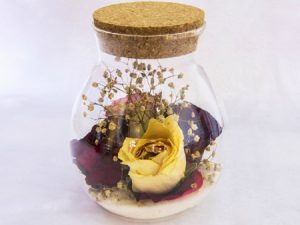
When it comes to indoor gardening, low-light environments can be a real challenge. However, there are still plenty of options for those who want greenery in their homes or offices without access to natural sunlight. Choosing plants that grow well in low light can create a beautiful and vibrant indoor garden.
Understanding Low Light Conditions
Before selecting the best plants for your space, it is important to understand what counts as low light. For example, a north-facing room without windows is considered very low light, while a south-facing room with natural daylight will get more light. Although some plants can grow in complete darkness, most need at least some light to survive. If you are looking for an indoor tree low light that can thrive in low light conditions, there are a few options to consider.
Top Plants for Low Light Conditions
Here are some of the best plants to consider for low light environments:
1. Snake Plant
Snake plants are a great choice for low-light indoor environments because they can survive in nearly any lighting situation. They are capable of tolerating low light conditions and require minimal care.
2. Dracaena
Dracaena is another great plant to consider if you are looking for indoor plants that grow well in low-light conditions. It has a variety of shapes, sizes, and colors, making it a versatile option for any space.
3. Spider Plant
Spider plants are known for their air-purifying abilities and graceful foliage. They are also great for low-light areas in your home. Additionally, spider plants can also grow well in a variety of lighting situations.
4. ZZ Plant
ZZ plants are excellent indoor plants that require minimal care and can tolerate low-light conditions. They are often used in interior design to add a touch of greenery to a space.
5. Pothos
Pothos is a classic indoor plant known for bringing life to any dark corner of your home. It is also an excellent air purifier and perfect for those looking to start indoor gardening.
Other Considerations
When selecting plants for low light environments, it is important to consider the plant’s growth rate, water requirements, soil type, and plant size. Depending on the size of the space in which you want to keep the plant, you may want to choose a plant that is compact and slow-growing, such as a snake plant or ZZ plant. If you have more space, you could grow a larger plant, such as a philodendron or peace lily.
Oregano is a great herb to grow in the garden, as it can tolerate a variety of conditions, including partial shade. It is also a relatively easy herb to care for, and it will reward you with fresh, flavorful leaves all summer long. To grow oregano in your garden, choose a spot that gets at least 6 hours of sunlight per day. The soil should be well-drained and slightly alkaline. Water the oregano regularly, but do not overwater it. Fertilize the oregano every few weeks with a balanced fertilizer. With proper care, your oregano plant will thrive and produce plenty of leaves for you to enjoy.
In conclusion, even if you do not have access to natural light, there are still plenty of indoor plants that can thrive in low-light settings. The plants listed above are a great place to start if you’re looking for indoor plants that grow best in low light.
FAQs
Q: What is considered low light for indoor plants?
A: Low light can be defined as an area that receives less than 1000 lux of light.
Q: Can indoor plants survive without sunlight?
A: Yes, but not all plants can survive without sunlight. Many plants require light to live, but some can grow in low light and even office lighting conditions.
Q: Can I grow herbs or vegetables in low light indoor environments?
A: Some herbs can grow well in low light indoor environments. However, growing vegetables indoors without natural light may not yield the same results as outdoor gardening.
Q: How often should I water plants in low-light conditions?
A: Water requirements vary depending on the plant. It is important to not overwater plants in low light conditions, as the soil will not dry out as quickly as in brighter conditions.
Q: Are there any plants that can survive in complete darkness?
A: There are some plants that can survive in complete darkness, but they are hard to find and are not commonly used in indoor gardening.






